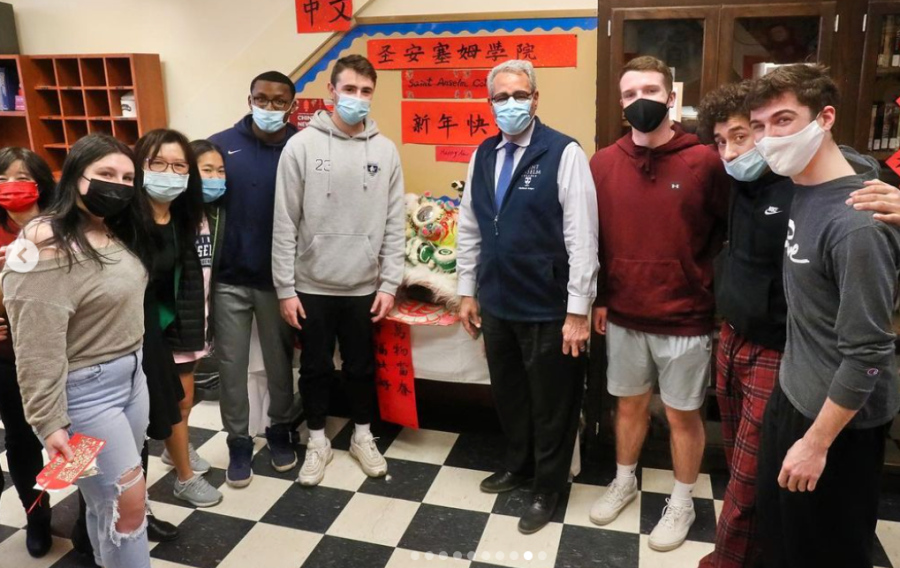Modern Language students celebrate Chinse Year of the Tiger
March 2, 2022
On the fourth floor of Alumni, a beautiful Chinese tradition was celebrated and taught to the students and staff of Saint Anselm. The floor radiated festivities, as fai chun hung on the walls and activities commenced in three different rooms. The department of modern languages floor was a wonderful scene on this day. People congregated, talked, laughed, and shared the traditions customary in China. Chinese New Year is what was being celebrated on the 11th of February.
Chinese New Year is a celebration of a new year based on a solar calendar. There are 12 Chinese zodiac signs that are represented by an animal and alternate for each year. Sam, from the resource center, claimed that this “Chinese new year is the year of the tiger and the celebration of spring”.
This concept of animals used to represent the year dates back to a competition held many years ago in the distant past. Professor Ling claims that “A long time ago there was this emperor and we didn’t have a calendar at that time.” She then explains how it was decided to have the animals of China compete in a race to determine which was the fastest, and that “all of China’s animals would come to compete in this race.”. The animal first to win in the race was the rat. The tiger, this year’s animal, took third place in the race. The animal of the year is based on the order in which the animals finished. For instance, next year will be the year of the rabbit since it finished in fourth place. Once the order has reached the end, it restarts with the rat and the pattern continues repetitively.
Professor Ling claimed that “Chinese women think that age is a secret. Sometimes they don’t want to tell people their true age. They just tell what animal year they were born.” This day is celebrated with festivities in hopes to gain good fortune.
To celebrate this tradition, there were three stations that held different Chinese customs and traditions. These activities included calligraphy, paper cutting, and mahjong. The calligraphy station taught people participating how to draw the Chinese symbol for spring using a brush and container of black ink. The strokes making up the symbol would be purposely done on red paper in order to look like fai chun. Fai chun are pieces of decorated paper which have messages and sayings on them which are strung up throughout China in hopes of good fortune. The paper cutting station had an assortment of papers with a variety of patterns to choose from to cut out. There was everything from horses to symbols for participants to cut out.
Lastly, people who participate in this event were able to try to learn how to play a popular game in China known as mahjong. This game consists of matching different symbol tiles, and is used as a way to socialize. The game can take upwards of 2 to 3 hours, which provides ample time to talk and strategize. When people finished each activity they received a stamp to add to a piece of paper provided once entering the event. Once a person received all of the stamps, they were given free Chinese food as an additional reward to an already interesting event. Dermot claimed that “we served lo mein, some rice, and some crab rangoons”.
The environment, activities, and food were all a lovely way to celebrate and teach traditions of China. People who participated were able to leave with possible newfound knowledge or were able to celebrate traditions they follow with other Anselmians.



